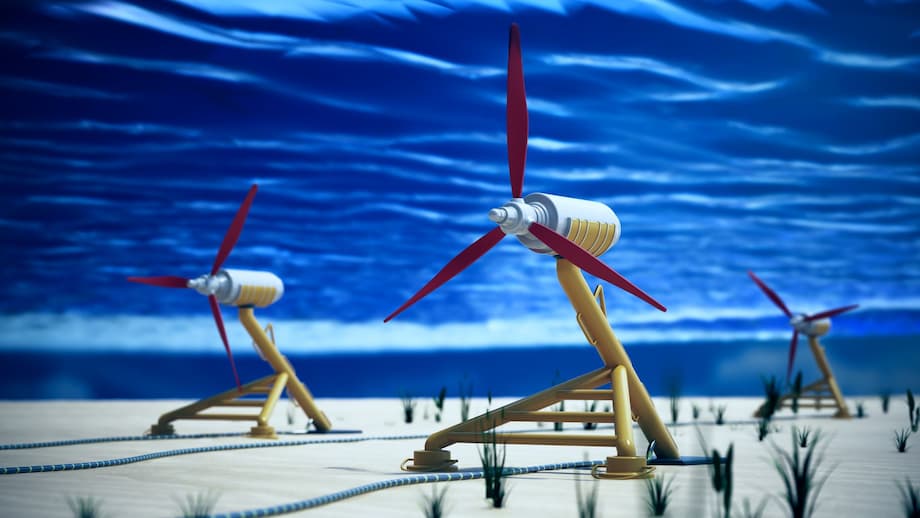Ocean Waves: The Next Frontier in Renewable Energy
As the world races to decarbonize and secure sustainable energy sources, the vast, untapped power of the oceans has become a focal point for innovation. Recent breakthroughs by Chinese scientists have propelled ocean wave energy harvesting into the spotlight, with next-generation triboelectric nanogenerators (TENGs) achieving a remarkable 117% power-conversion efficiency in real marine conditions. This leap not only promises to revolutionize marine energy grids and the Internet of Things (IoT) at sea, but also signals a new era for distributed, self-powered ocean monitoring and even hydrogen production from seawater.
- Ocean Waves: The Next Frontier in Renewable Energy
- What Are Triboelectric Nanogenerators (TENGs)?
- Breakthroughs in TENG Design: From Origami to Spheres
- Real-World Applications: From Marine IoT to Hydrogen Production
- Engineering Innovations: Adapting to the Ocean’s Chaos
- Challenges and the Path to Commercialization
- Broader Implications: Powering the Digital Ocean
- In Summary
But what exactly are triboelectric nanogenerators, and how have researchers managed to harness the chaotic, low-frequency motion of ocean waves so efficiently? This article explores the science, the technology, and the transformative implications of this blue energy revolution.
What Are Triboelectric Nanogenerators (TENGs)?
Triboelectric nanogenerators are devices that convert mechanical motion—such as the rise and fall of ocean waves—into electrical energy by exploiting the triboelectric effect. This effect occurs when certain materials become electrically charged after coming into contact and then separating. TENGs use this principle, coupled with electrostatic induction, to generate electricity from even the most irregular and low-frequency movements, making them ideal for ocean environments where wave motion is unpredictable and multi-directional.
Unlike traditional electromagnetic generators, which are heavy, costly, and inefficient at low frequencies, TENGs are lightweight, cost-effective, and excel at converting the slow, random movements of ocean waves into usable power. Their modularity and scalability make them particularly attractive for powering distributed sensor networks and marine IoT devices.
Breakthroughs in TENG Design: From Origami to Spheres
Researchers from the Beijing Institute of Nanoenergy and Nanosystems and Guangxi University have pioneered six innovative TENG structures, each tailored to maximize energy capture and adapt to the harsh realities of the marine environment. These designs, published in Nano-Micro Letters, include multilayer stacks, origami folds, magnetic-levitation frames, and spherical or dodecahedral architectures. Each approach addresses specific challenges, such as maximizing space utilization, enhancing durability, and capturing energy from all possible wave directions.
For example, origami-folded arrays increase the surface area for charge transfer, while magnetic-levitation cores reduce friction and wear, extending device lifespans. Spherical and tensegrity structures enable omni-directional energy harvesting, eliminating the “blind spots” that plague conventional designs. These advances have led to volumetric power densities exceeding 600 W/m³—far surpassing earlier prototypes and setting new benchmarks for marine energy devices.
Hybrid Systems: Combining Forces for Maximum Efficiency
One of the most significant innovations is the integration of TENGs with other energy harvesting technologies, such as electromagnetic generators (EMGs), piezoelectric generators (PENGs), and even solar cells. These hybrid systems leverage the strengths of each technology, capturing a broader spectrum of wave frequencies and environmental conditions. Frequency-complementary couplings allow these devices to achieve the reported 117% power-conversion efficiency—a figure that reflects the ability to harvest more energy from the same wave input by combining multiple mechanisms.
For instance, a chaotic pendulum-based hybrid system decouples the floater from the internal generator, transforming irregular wave energy into stable rotational motion. This not only boosts efficiency but also enables reliable, self-powered operation of marine sensors and navigation lights, as demonstrated in open-sea trials.
Real-World Applications: From Marine IoT to Hydrogen Production
The implications of these advancements extend far beyond academic curiosity. Self-powered ocean buoys equipped with TENGs have already demonstrated the ability to support satellite communications, power commercial sensors, and enable long-term environmental monitoring in remote and harsh environments like the Arctic Ocean. In one sea trial, a double-sided cylindrical TENG buoy generated enough power to transmit over 500 bytes of data daily, even under challenging wave and temperature conditions.
Large-scale deployment of TENG arrays could form the backbone of self-sustaining ocean grids, supporting distributed marine IoT networks for applications such as:
- Real-time water quality and environmental monitoring
- Navigation and safety beacons
- Autonomous underwater vehicles and sensor platforms
- Hydrogen production via seawater electrolysis
By providing a reliable, renewable power source, TENGs could eliminate the need for battery replacement or maintenance in remote ocean installations, dramatically reducing operational costs and environmental impact.
Engineering Innovations: Adapting to the Ocean’s Chaos
One of the greatest challenges in ocean energy harvesting is the unpredictable, multi-directional, and low-frequency nature of wave motion. To address this, engineers have developed a range of adaptive and self-aligning TENG architectures. For example, butterfly-stacked TENGs use sunflower-inspired platforms that autonomously rotate to face incoming waves, maximizing energy capture without external power. Lever mechanisms convert low-amplitude, high-torque wave energy into high-amplitude, low-torque motion, significantly boosting charge output.
Gyroscope-structured TENGs and rolling-mode designs further enhance multi-directional harvesting by allowing independent operation of inner and outer generation units. These systems have been validated in both laboratory and real-sea environments, powering commercial electronics and demonstrating impressive durability—some showing less than 8% output attenuation after 30 days submerged.
Networking and Modular Design for Scalability
To scale up energy harvesting, TENG units are often networked into arrays using one-dimensional chains or two-dimensional planar structures. Modular designs, such as those employing planetary gear mechanisms, allow for frequency upconversion—transforming slow wave motion into high-speed generator rotation. This not only increases electrical output but also enables easy assembly, maintenance, and replacement of individual units.
Advanced circuit connections, including rectifier bridges and charge-excitation schemes, optimize power output and minimize losses across large arrays. Hydrodynamic modeling and real-world testing ensure that these networks can withstand the rigors of the marine environment while maintaining high efficiency and reliability.
Challenges and the Path to Commercialization
Despite these remarkable advances, several challenges remain before TENG technology can achieve widespread commercial deployment. Key issues include:
- Standardization of testing and performance metrics
- Long-term durability and resistance to marine corrosion
- Efficient energy management and grid integration
- Cost-effective manufacturing and deployment at scale
As highlighted by a recent review on Nanowerk, inconsistencies in testing conditions and a lack of standardized evaluation methods have led to widely varying performance claims across studies. Factors such as fabrication details, mechanical setup, and environmental conditions can significantly affect output, making it difficult to compare results or validate breakthroughs. The scientific community is now calling for international standards to ensure reliable, reproducible data and to accelerate the transition from laboratory prototypes to real-world applications.
Environmental protection and sustainability are also at the forefront of future research. Efforts are underway to use recycled ocean plastics in TENG construction, develop smart materials for maintenance-free operation, and design circular economy approaches for device end-of-life management.
Broader Implications: Powering the Digital Ocean
The ability to efficiently convert ocean wave energy into electricity has profound implications for the future of marine technology, environmental monitoring, and global energy systems. By enabling self-powered, distributed sensor networks, TENGs can support the development of the marine Internet of Things (MIoT), providing real-time data on ocean health, climate change, and maritime activity.
Moreover, the integration of TENGs with other renewable energy sources—such as wind and solar—could create resilient, hybrid power systems capable of supporting offshore platforms, aquaculture, and even coastal communities. The potential for hydrogen production from seawater adds another dimension, offering a pathway to clean fuel generation directly from the ocean.
In Summary
- Chinese researchers have achieved a record 117% efficiency in converting ocean wave energy to electricity using advanced triboelectric nanogenerators (TENGs).
- TENGs excel at harvesting low-frequency, multi-directional wave energy, outperforming traditional electromagnetic generators in marine environments.
- Innovative designs—such as origami folds, magnetic-levitation frames, and spherical architectures—maximize energy capture and device durability.
- Hybrid systems combining TENGs with electromagnetic and piezoelectric generators further boost efficiency and reliability.
- Real-world applications include self-powered ocean buoys, marine IoT networks, environmental monitoring, and hydrogen production.
- Challenges remain in standardizing testing, ensuring durability, and scaling up deployment, but ongoing research is rapidly addressing these issues.
- The blue energy revolution promises to transform the way we power and monitor the oceans, supporting a sustainable and connected future.












